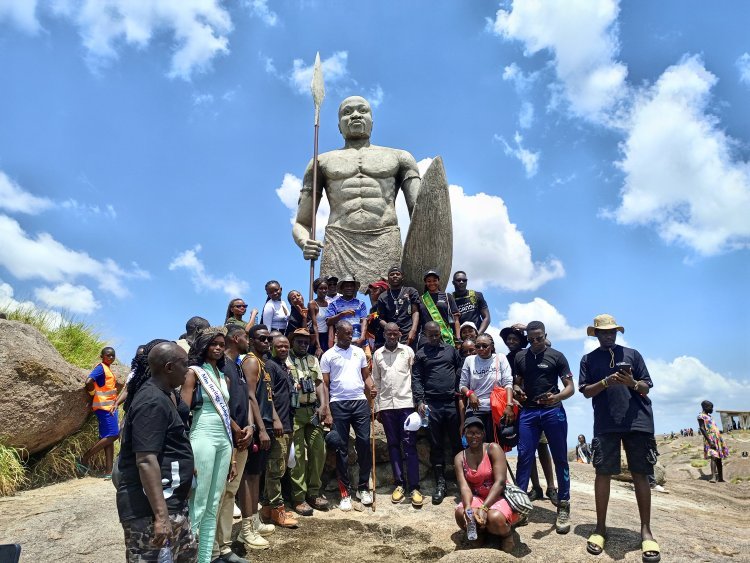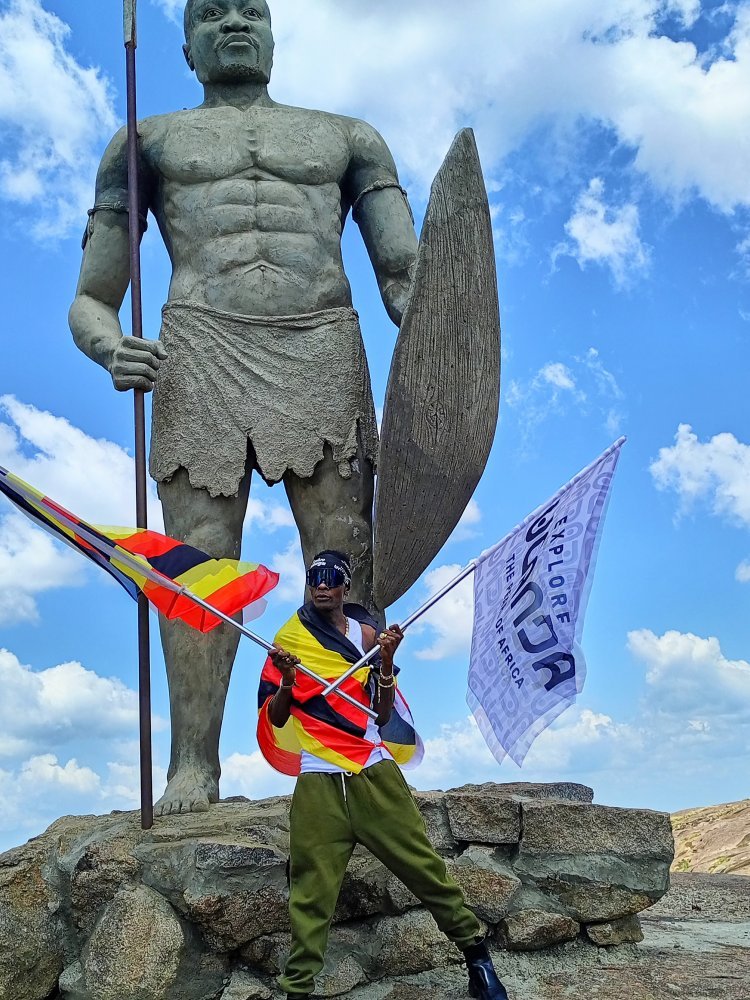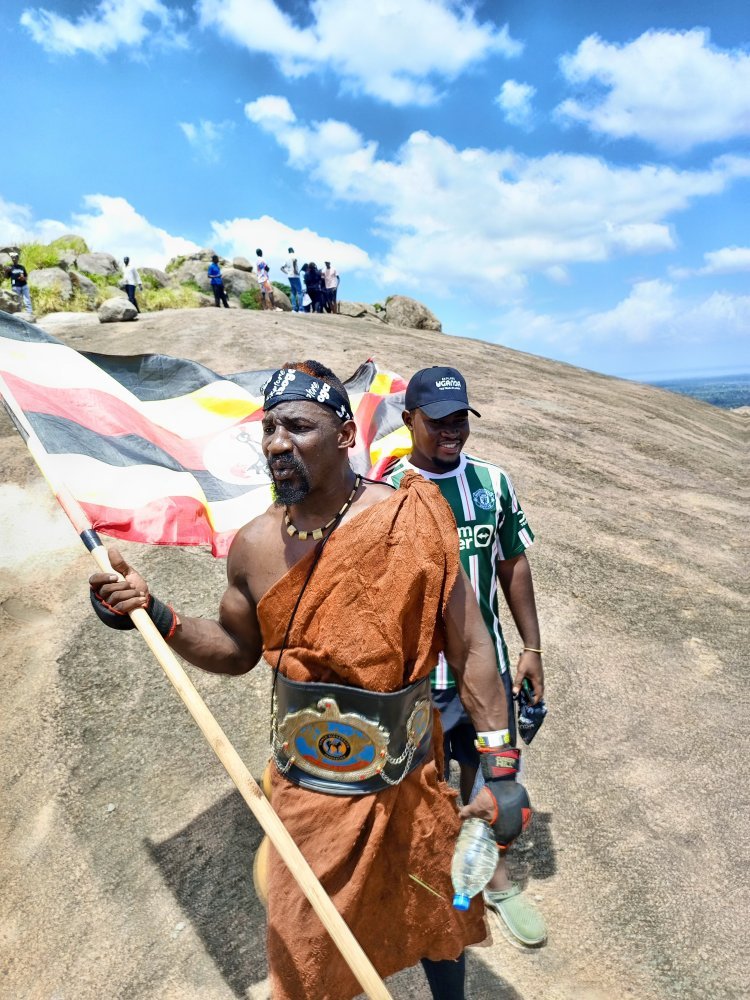Monument of Mukama Nyamutukura at Kagulu Rock Reveres Busoga Kingdom's Rich Cultural Heritage

The erected monument of the Legendary Mukama Nyamutukura at the historical Kagulu Rock in Buyende district stands tall as a beacon of cultural heritage in Busoga kingdom.
Nyamutukura, the chief Royal Prince of Bunyoro-Kitara Kingdom is believed to have deserted the land of his ancestors over endless power struggles, and sailed through Lake Kyoga to settle in Busoga Kingdom, where he discovered the Kagulu Rock in the early 16th century.

It is said that the renowned hunter and articulate warrior used the sword to express dissatisfaction over the unfair distribution of power in his native Bunyoro-Kitara kingdom, which easily triggered his move to an unknown land in eastern Uganda. He is believed to have travelled alongside his wife Nawudo, five sons and an undocumented number of servants.
He was also skilful in blacksmith works and he is believed to have designed hoes for the native communities in Busoga, who over time embraced him as their suitable leader since they lacked central monarchial systems of governance as referenced by their immediate Buganda neighbours.

Over time, he introduced treasured cultural practices like fishing in the deeper areas of Lake Kyoga, rather than depleting the shorelines and farming near homesteads, which made him famous in the community.
In the course of his settlement in Busoga, Nyamutukura allocated land to his five sons comprising Zibondo, Kitimbo, Wakoli, Tabingwa and Ngobi. He later returned to Bunyoro when full of age and on realizing that their father was not destined to reclaim his stewardship over them in Busoga, the sons established strong chiefdoms, which were overly interdependent on each other.

Boxer Golola Moses while summiting Kagulu Rock
His sons dominated their areas of settlement in Busoga and over time formulated the five-member chief royal council, where probable candidates for Busoga’s kingship are elected to date after the demise of any reigning King amongst them.
Nyamutukura’s history of settling at the Kagulu rock has overly made it significant in the monarchial cycle of the Busoga Kingdom, with several royal chiefs and their subjects paying frequent homages to derive blessings from the spirits of their departed ancestors.

Local tourists summiting Kagulu rock
Now, in his memory, the kingdom erected a monument at the topmost point of Kagulu Rock, located about 3600ft above sea level. It is one of the historical points aimed at attracting tourism traffic to the area.
The monument bears his facial and physical structural appearance, as documented in the kingdom’s archives and narrations from generational elders passed to their successors over time. It presents Nyamutukura clad in animal skin wraps while holding a spear and shield, believed to be the ancient regalia of outstanding warriors from the royal lineages in his day.

The road leading to Kagulu rock
Hellen Namutamba, the tourism minister in Busoga kingdom says that the cultural heritage on the Kagulu Rock is overly attracting tourists with the love to adventure into ancient cultural aspects and spirituality.
Namutamba further argues that since little was documented about Nyamutukura, his artistic monument on top of the rock is key in driving tourists.

“Several features ranging from steps and supportive rails have over time been established on the rock to create an adventurous experience and establishment of Nyamutukura’s monument helps tourists to have a meditative image of the great warrior, in whom Busoga Kingdom derives her roots,” she says.
Praise Walusimbi, a researcher says that the establishment of monuments for ancient traditional leaders eases knowledge transfer to the future generations, most of whom prefer learning through direct access to visual objects rather than ancient narratives.
Walusimbi is optimistic that such monuments will ease the promotion of cultural heritage.
*****
URN

































